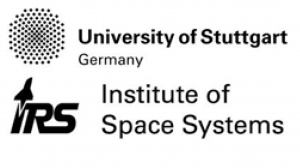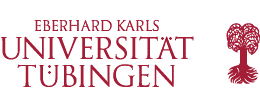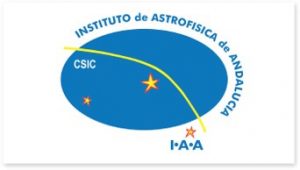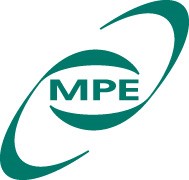University of Stuttgart, Institute of Space Systems
The University of Stuttgart’s Institute of Space Systems (Institut für Raumfahrtsysteme, IRS) is located within the Space Center Baden-Württemberg (RZBW) in Stuttgart Vaihingen. New state-of-the-art labs enable research activities in a wide range of fascinating topics in the field of Space Technology and Astronautic Applications. More than 170 employees, including over 60 PhD students, work in close cooperation with national and international partners from industry and research institutions such as NASA and DLR. Two major projects of the IRS with high relevance for ESBO DS are the Small Satellite Programme and the Stratospheric Observatory for Infrared Astronomy (SOFIA).
The Small Satellite Programme launched its first satellite, the Flying Laptop, in 2017, which is now succesfully operated from Stuttgart. The Deutsches SOFIA Institut (DSI), a department of the IRS, manages the German share of the airborne observatory under contract of the DLR.
In addition to the overall project coordination of ESBO DS, the ITS is responsible for the prototype telescope, the prototype visible light instrument, and the concept study.
Swedish Space Corporation
 Swedish Space Corporation (SSC) is a state-owned Swedish company, with purpose to conduct space activities with a commercial focus, be responsible for the operation of Esrange Space Center in northern Sweden, and conducting business compatible therewith. The operations of the company include both a commercial part and a public mission.
Swedish Space Corporation (SSC) is a state-owned Swedish company, with purpose to conduct space activities with a commercial focus, be responsible for the operation of Esrange Space Center in northern Sweden, and conducting business compatible therewith. The operations of the company include both a commercial part and a public mission.
The public mission includes the launch of rockets and balloons for different types of research and technology development and related services. These public mission activities are solely conducted within the company’s division Science Services.
The Science Services Division at SSC runs its own balloon and sounding rocket missions and programs that are launched from Esrange. This includes:
- Development of balloon and rocket systems, payloads, service systems, gondolas etc.;
- integration testing and verification;
- Launch, flight, operation and recovery of balloons.
According to its vast experience, SSC will be mostly involved in the development and definition of flight platforms within ESBO DS, as well as the design, manufacturing, and test of prototype elements.
University of Tübingen, Institute for Astronomy and Astrophysics
The Eberhard Karls University Tübingen (EKUT) is a public research university. It is one of Germany’s most famous and oldest universities, noted in medicine, natural sciences, and the humanities.
The Institute of Astronomy and Astrophysics comprises four sections. Two of them (Computational Physics and Theoretical Astrophysics) are theory oriented, while the other two (Astronomy and High-Energy Astrophysics) have a decade-long experience in experimental space-based astronomy and analysis of data from space and ground-based observatories.
The Astronomy Section of the Institute has a long tradition in building UV instrumentation and Multichannel Plate (MCP) Detectors and using them on rockets and satellites. The ORFEUS far-UV telescope, which flew twice aboard Space Shuttles, was a US-German collaboration led by the Astronomy Section of Tübingen University. MCP detector development was and is funded by the German Aerospace Center (DLR).
Within ESBO DS, the EKUT Astronomy Section is responsible for the design and construction of the UV instrument (imaging camera and MCP detector plus readout-electronics), for the scientific observation program and the analysis of the UV observations. The science is focused on the exploration of the late stages of stellar evolution and the activity of cool dwarf stars.
Max Planck Society, Max Planck Institute for extraterrestrial Physics
The Max Planck Society is a science organization founded in 1948 with exceptional, results-oriented basic research in the life sciences, natural sciences and the humanities. Max Planck researchers today continually advance into new dimensions of knowledge. To date, 18 of them have been awarded a Nobel Prize. That is also why the Max Planck Society and its 83 research institutes enjoy a strong reputation in Germany and abroad.
The Max Planck Institute for Extraterrestrial Physics (MPE) works on topics in modern astrophysics, using mainly experimental but also theoretical methods. Its name was chosen to reflect its research – the physics of space – but also because of its research methods. Many observations have to be carried out above the dense Earth atmosphere, using balloons, airplanes, rockets, satellites, and spacecraft. These are complemented by instruments in ground-based observatories whenever possible, and some experiments are conducted in the laboratories.
The ESBO DS project is connected to the Center for Astrochemical Studies (CAS) and will complement the CAS activities, which are mainly focused on the chemical and physical processes in star and planet forming regions, with the aim of understanding the origin and evolution of our Solar System.
MPE is involved in the definition of the scientific orientation as well as the design of the scientific operation of the ESBO infrastructure.
CSIC – Instituto de Astrofísica de Andalucía
The Spanish National Research Council (CSIC) is the largest public institution dedicated to research in Spain and the third largest in Europe. CSIC has a staff of over 13,500 employees, of which about 3,300 are permanent researchers and about 4,300 are pre- and post-doctoral researchers. The CSIC has 71 institutes distributed throughout Spain. In addition, it has 54 Joint Research Units with universities or other research institutions. There is also a delegation in Brussels.
The Instituto de Astrofísica de Andalucía (IAA-CSIC), is one of the largest CSIC institutes, with more than 200 participants, devoted to Astronomy and Astrophysics. The research carried out at IAA is multidisciplinary, including multi-wavelength and multi-site astronomical observations, space observations, theoretical and computational studies, and technological and instrumental developments. The IAA covers all major areas of Astrophysics: stellar physics, star formation, interstellar medium, extragalactic astronomy, cosmology; and a large department exploring the Solar System. Besides the scientific core, the IAA has three service branches: Instrumental & Technological Unit, Computer Centre, and General Services) which includes the Communication and Outreach Unit.
The IAA lead the precursor project of ESBO DS, ORISON, which was also funded under Horizon 2020. Within ESBO DS, the IAA is involved in the definition of the observatory operations and governance concept of ESBO and responsible for the development of a fine pointing system based on adaptive optics technology.

